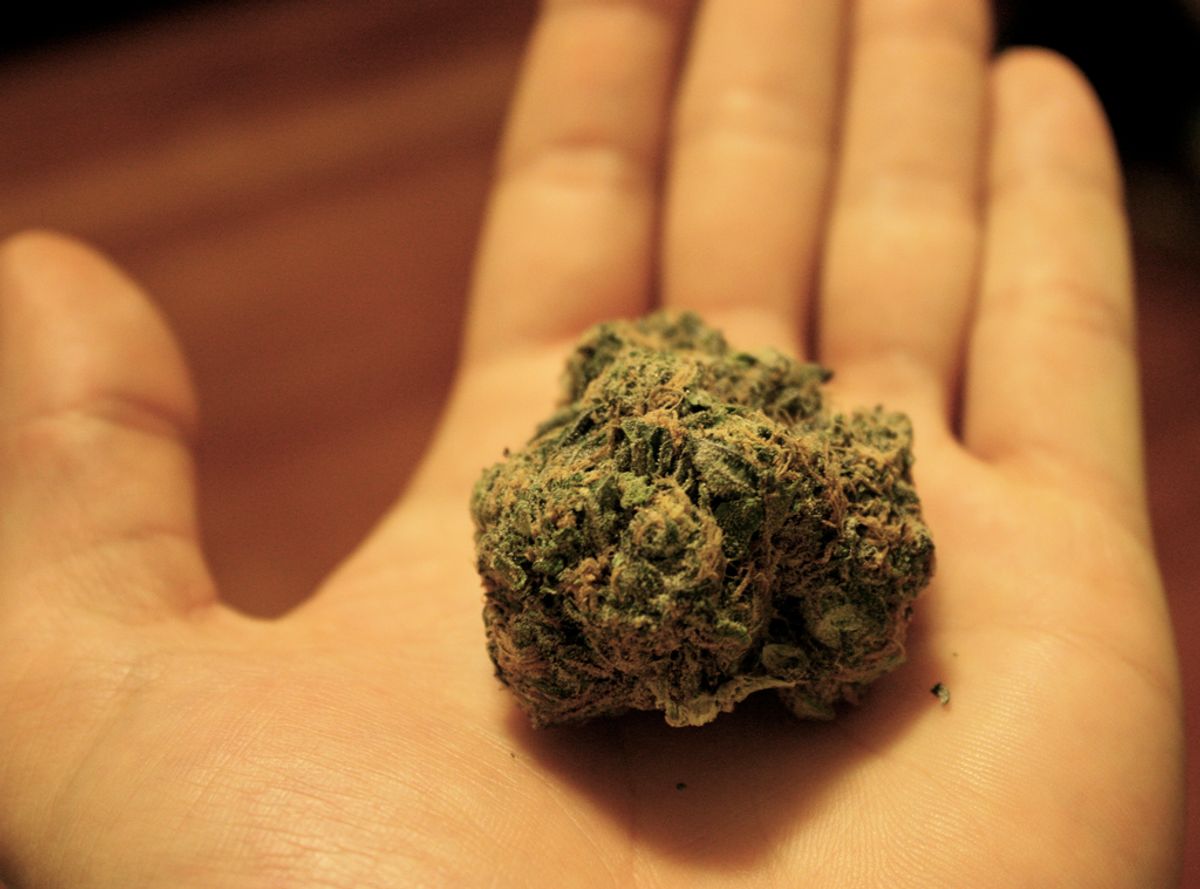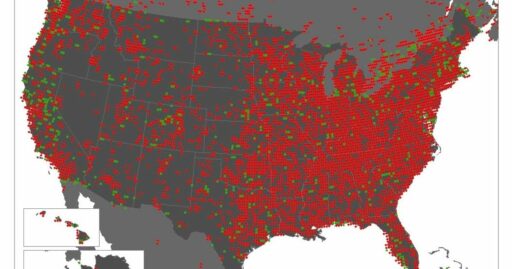As of early 2024, the United States has seen a significant shift in the legalization of marijuana. With a patchwork of policies across the nation, understanding the current state of cannabis legalization is crucial. This article delves into the landscape of marijuana legalization, examining the societal and economic impacts, and the ongoing tension between state and federal laws. Below, we provide a detailed analysis of the states that have embraced full recreational use, medical marijuana, and limited access to non-psychoactive cannabis products.
Key Takeaways
- 24 states plus Washington, D.C., have legalized recreational marijuana use, while 14 states allow it for medical purposes only.
- 54% of Americans reside in states with legalized recreational marijuana, and 74% live in states where it’s legal for either recreational or medical use.
- California leads the nation with the highest number of dispensaries, contributing to the nearly 15,000 cannabis dispensaries across the U.S.
- A significant majority of Americans, 88%, believe marijuana should be legal in some form, with 59% supporting both recreational and medical use.
- Despite state-level legalization, marijuana remains illegal under federal law, posing challenges for businesses and shaping the future of nationwide policies.
The Landscape of Legalization: A State-by-State Analysis

States with Full Recreational Use Legalization
As of February 2024, the landscape of marijuana legalization in the United States has seen significant changes. 24 states, along with the District of Columbia, have legalized marijuana for recreational use. This marks a considerable shift since Colorado and Washington set the precedent in 2012.
The following states have embraced full recreational marijuana legalization:
- California
- Colorado
- Washington
- Oregon
- Alaska
- Nevada
- Maine
- Massachusetts
- Vermont
- Michigan
- Illinois
- Arizona
- New Jersey
- New York
- Virginia
- New Mexico
- Connecticut
- Rhode Island
- Maryland
- South Dakota
- Montana
- Missouri
- Delaware
- Hawaii
- District of Columbia
The wave of legalization reflects a broader societal acceptance, with a Pew Research Center survey indicating that 88% of U.S. adults believe marijuana should be legal in some form. The trend is not only a reflection of public opinion but also a response to the potential economic benefits that come with legalization.
With ongoing legislative efforts and the potential for more states to join the ranks, the status of cannabis businesses is poised for significant legal improvements. States like Ohio are actively working towards implementing recreational cannabis, and others may follow suit in 2024.
Medical Marijuana: The Pioneers and the Newcomers
The journey of medical marijuana legalization began with California taking the lead in 1996. Since then, a wave of legalization has swept across the country, with numerous states following suit. The landscape of medical marijuana is a patchwork of policies, varying from state to state, reflecting the diverse attitudes and approaches to cannabis regulation.
- California: The first state to legalize medical marijuana.
- New Jersey & New York: Recent entrants in the medical marijuana market.
- States with established medical programs: Continue to evolve with mergers, acquisitions, and policy updates.
The proliferation of dispensaries has been a direct consequence of medical marijuana legalization. With nearly 15,000 cannabis dispensaries nationwide, access to medical cannabis is becoming more commonplace, especially in states with a long history of legalization.
As the industry matures, we continue to see if more progress is being made for cannabis across the country. The presence of dispensaries is not only a sign of changing times but also a reflection of the growing acceptance and normalization of marijuana for therapeutic use.
Limited Access States: CBD and Low-THC Products
In the evolving landscape of cannabis legislation, a distinct category of states has emerged, characterized by their limited access to cannabis products. These states permit the use of products with minimal or no THC content, such as CBD oil, which lacks the psychoactive effects typically associated with marijuana. The focus in these regions is on the therapeutic potential without the high.
Across the nation, 12 states fall into this category, offering a legal haven for CBD and low-THC products. While these states have not embraced full legalization, they have recognized the value of cannabis for certain medical conditions and have thus provided a legal framework for such products. This approach reflects a cautious but progressive stance on cannabis, balancing regulatory oversight with accessibility for those in need.
The legal nuances in these states underscore the complexity of cannabis legislation, where even within limited access frameworks, the landscape is continuously shifting.
The table below provides a snapshot of the presence of dispensaries in states with limited access laws:
| State | Dispensaries with Low-THC/CBD Products | Percentage of State Population with Access |
|---|---|---|
| State A | 15 | 40% |
| State B | 10 | 30% |
| State C | 5 | 20% |
| State D | 3 | 10% |
Note: The above table is illustrative and does not represent actual data.
The Societal Impact of Legalized Marijuana

The Surge of Cannabis Dispensaries Across America
The proliferation of cannabis dispensaries in the United States has been remarkable. Nearly 15,000 dispensaries now dot the landscape, a testament to the growing acceptance and legalization of marijuana. California leads the charge with a staggering 3,659 dispensaries, a figure that eclipses the totals of other states.
The presence of a dispensary in nearly every county reflects a significant shift in American society. With 79% of Americans living in a county with at least one cannabis dispensary, access to marijuana has become more widespread than ever before.
The distribution of dispensaries is not uniform, however, with a notable concentration near state borders where laws are more permissive. This strategic placement suggests that dispensaries are not only serving local populations but also catering to residents from neighboring states with more restrictive policies.
Decriminalization Efforts and Their Effects
The wave of decriminalization across various states has led to significant societal shifts. Pardons for drug offenses have become a focal point, with states like California and Illinois taking the lead in expunging low-level marijuana convictions. This movement acknowledges the changing perceptions of marijuana use and aims to rectify past convictions that are no longer in line with current laws.
The statistics above are alarming because illicit drugs pose many risks of harm to drug users and to society.
The bipartisan opposition to federal crackdowns on state-legalized marijuana use signals a broader acceptance of decriminalization efforts. Even as federal policy remains unchanged, states are actively working to reduce the burden of past drug policies on individuals.
- San Francisco plans to expunge approximately 9,000 convictions.
- Denver has established a program to clear marijuana convictions.
- Washington state’s Governor announced pardons for thousands convicted of possession.
These actions not only alleviate the legal consequences for individuals but also reflect a growing trend towards a more lenient and health-oriented approach to drug policy.
Public Opinion on Marijuana Legalization
The shift in public opinion regarding marijuana legalization has been significant and widespread. Most Americans now live in a legal marijuana state, with a Pew Research Center survey from October 2022 indicating that 88% of U.S. adults believe marijuana should be legal in some form. This consensus is reflected in the increasing number of dispensaries across the nation.
The societal acceptance of marijuana is evident not only in the number of states legalizing the substance but also in the presence of dispensaries in local communities.
The table below summarizes the current public stance on marijuana legalization:
| Legalization Type | Percentage of Americans in Favor |
|---|---|
| Recreational and Medical Use | 59% |
| Medical Use Only | 30% |
While a majority supports full legalization, a significant portion advocates for medical use only, highlighting the nuanced perspectives on cannabis use.
Economic Implications: The Green Rush

Job Creation and the Cannabis Industry
The legalization of marijuana has not only altered legal landscapes but has also significantly impacted the job market. The cannabis industry has become a notable source of employment, with a variety of positions ranging from cultivation and processing to sales and marketing. The industry’s growth is reflected in the increasing number of jobs it has created.
In the United States, businesses were able to raise 2.4 billion U.S. dollars in 2020 for cannabis-related activities, indicating a robust interest in the sector. The United Kingdom, on the other hand, has emerged as a cannabis deal hub in Europe, accounting for over half of all investment activity on the continent.
The surge in cannabis industry jobs is a testament to the sector’s resilience and adaptability, even as businesses navigate the complexities of compliance and stigma from financial institutions.
As more states consider legalization to capitalize on tax revenue, the industry is poised for further expansion. This growth suggests a promising future for job creation within the cannabis sector, as it continues to be at the forefront of legislative and business activity.
Tax Revenue from Legal Cannabis Sales
The legalization of marijuana has opened up a new stream of tax revenue for states that have embraced either medical or recreational cannabis sales. States are now reaping the financial benefits of this burgeoning industry. For instance, the first two months of 2024 have highlighted the significant role cannabis plays in legislative and business activity, particularly in Ohio.
With the 2024 ballot approaching and state legislatures eager to tap into the growing tax revenue stream, we can expect more states to initiate or expand their cannabis programs. This movement suggests a promising future for the legal status of cannabis businesses, as both legislative and executive branches consider changes to cannabis law and policy.
The potential rescheduling of cannabis in 2024 could unlock further legal improvements and significantly boost the industry’s contribution to state economies.
Here’s a snapshot of the U.S. legal recreational cannabis sales forecast:
| Year | Sales (in billion USD) |
|---|---|
| 2022 | 9.7 |
| 2023 | 11.5 |
| 2024 | 13.6 |
| 2025 | 15.9 |
| 2026 | 18.4 |
| 2027 | 21.2 |
| 2028 | 24.5 |
These figures underscore the economic potential of legal cannabis and the importance of a well-regulated market to maximize fiscal benefits for states.
Market Dynamics and Dispensary Proliferation
The cannabis industry has seen a significant expansion in recent years, with nearly 15,000 cannabis dispensaries now operating across the United States. This growth is not uniform, however, as certain regions exhibit a higher density of dispensaries. For instance, California leads the nation with a staggering 3,659 dispensaries, reflecting the state’s early adoption and large market for cannabis.
The dynamics of dispensary locations reveal a complex interplay between state laws, economic factors, and societal trends. While some feared that dispensaries would predominantly target low-income neighborhoods, the reality is more nuanced, with median incomes in areas with high dispensary concentrations varying significantly by state.
The proliferation of dispensaries has also been influenced by the strategic positioning near state borders, capitalizing on differences in state legislation. This has created hotspots of cannabis commerce in regions where neighboring states maintain more restrictive policies.
Table: Dispensary Concentration and Median Income by State
| State | Dispensaries | Median Income in High Concentration Areas |
|---|---|---|
| CA | 3,659 | Data Not Available |
| CO | Data Not Available | $20,000 less than low concentration areas |
| CT | Data Not Available | $20,000 less than low concentration areas |
| MD | Data Not Available | $20,000 less than low concentration areas |
| VA | Data Not Available | $20,000 less than low concentration areas |
Note: The table reflects a correlation between the number of dispensaries and median income in areas with high concentrations of dispensaries. Specific income data for California is not provided in the available information.
Navigating the Discrepancy Between State and Federal Laws

Challenges for Businesses Operating Under Divergent Legal Systems
Operating a cannabis business in the United States presents unique challenges due to the discrepancy between state and federal laws. While a number of states have legalized marijuana to varying degrees, it remains a Schedule 1 drug at the federal level, leading to a complex legal landscape for businesses to navigate.
The financial hurdles are particularly daunting. Federal banking laws have created a situation where banks are hesitant to provide services to cannabis-related businesses. This has resulted in a predominantly cash-based industry, with all the security and logistical issues that entails.
- Issues with the Banking Industry: Banks are reluctant to engage with cannabis businesses due to the risk of violating federal laws.
- Compliance Burdens: Businesses must adhere to stringent state regulations while also avoiding federal legal pitfalls.
- Investment Challenges: The uncertainty of the legal environment makes it difficult to attract investors and secure funding.
The situation is further complicated in countries like Canada, where despite nationwide legality, similar banking and investment issues persist.
The Role of Federal Policy in Shaping State Legislation
Federal policy plays a pivotal role in shaping state legislation regarding marijuana legalization. The Strengthening the Tenth Amendment Through Entrusting States (STATES) Act is a prime example of bipartisan support for respecting states’ rights in the realm of cannabis regulation. This act underscores a shift in federal approach, moving away from a stringent Drug War stance to one that acknowledges state sovereignty over marijuana laws.
The bipartisan nature of the STATES Act reflects a growing consensus that the federal government should not interfere with state decisions on cannabis legalization.
In practice, federal policy has already begun to align with this philosophy. For instance, Congress has restricted the Justice Department from using funds to target medical marijuana in states where it is legal. Such measures have garnered support across party lines, indicating a reluctance to escalate the Drug War, even among Republicans from states that have legalized marijuana.
While the STATES Act and similar proposals signal a move towards federal non-interference, the landscape remains complex. States continue to navigate the intricacies of federal law, which still classifies marijuana as a Schedule I substance, creating a challenging environment for businesses and legislators alike.
The Future of Federal Legalization Prospects
As the landscape of marijuana legalization evolves, the interplay between state and federal laws becomes increasingly complex. The push for federal legalization continues to gain momentum, with bipartisan support challenging previous opposition to state-level legalization efforts. In recent years, Congress has taken steps to limit federal interference with states that have legalized medicinal marijuana, signaling a shift in policy perspectives.
The rescheduling of cannabis is a hot topic in federal deliberations, with discussions aiming to reclassify cannabis from a Schedule I drug. This change could significantly impact the legal framework and open up new avenues for the cannabis industry, particularly in banking and finance. The year 2024 is eyed as a pivotal moment, with potential legislative changes that could further align federal policy with the growing number of states legalizing cannabis in some form.
The evolving federal stance on marijuana legalization suggests a future where the legal discrepancies between state and federal laws may be reconciled, fostering a more unified legal environment for cannabis businesses.
With the 2024 ballot approaching, states are also recognizing the economic benefits of legalization, such as increased tax revenue. This financial incentive may lead to more states implementing medical or recreational cannabis programs. As both legislative and executive branches consider changes to cannabis laws, the anticipation for a rescheduled cannabis and improved legal status for cannabis businesses is palpable.
Conclusion
As the landscape of marijuana legalization continues to evolve, the majority of Americans now reside in states where the use of cannabis, whether for recreational or medical purposes, is legal. With 24 states plus the District of Columbia embracing recreational marijuana, and an additional 14 states permitting medical use, the shift towards a more permissive stance on cannabis is evident. The proliferation of dispensaries across the nation underscores this trend, providing access to a growing number of citizens. As the nineteenth largest country by population, the collective of states with legalized recreational marijuana highlights the significant impact of these legislative changes. Despite federal prohibition, the call for legalization echoes strongly among Americans, with a vast majority supporting some form of legal use. This article has delved into the current state of marijuana legalization, reflecting a nation moving towards broader acceptance and recognition of cannabis within its legal frameworks.
Frequently Asked Questions
How many states have legalized recreational marijuana?
As of February 2024, 24 states plus the District of Columbia have legalized the recreational use of marijuana.
Which was the first state to legalize medical marijuana?
California was the first state to legalize medical marijuana in 1996.
What percentage of Americans live in a state where recreational marijuana is legal?
54% of Americans live in a state where the recreational use of marijuana is legal.
How many Americans live in a state with legal marijuana for either recreational or medical use?
74% of Americans live in a state where marijuana is legal for either recreational or medical use.
How many cannabis dispensaries are there in the United States?
There are nearly 15,000 cannabis dispensaries in the United States.
Have any states decriminalized recreational marijuana use?
Yes, 27 states have decriminalized recreational marijuana use across all levels of legalization.





